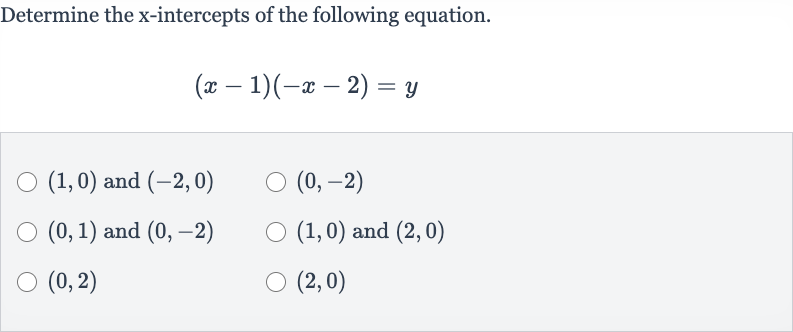Full solution
Q. Determine the -intercepts of the following equation. and and and
- Definition of -intercepts: The -intercepts of a function are the points where the graph of the function crosses the -axis. At these points, the value of is .
- Set equation equal to zero: Set the equation equal to zero to find the x-intercepts: .
- Solve for when : To find the x-intercepts, we need to solve for when is equal to zero. This gives us two equations to solve: and .
- Solve first equation: Solve the first equation: . Adding to both sides gives us .
- Solve second equation: Solve the second equation: . Adding to both sides gives us . Multiplying both sides by gives us .
- Identify x-intercepts: The x-intercepts of the equation are the solutions to the equations we found: and . Therefore, the x-intercepts are and .
More problems from Write a quadratic function from its x-intercepts and another point
QuestionGet tutor help
QuestionGet tutor help
QuestionGet tutor help
QuestionGet tutor help
QuestionGet tutor help
QuestionGet tutor help
QuestionGet tutor help
QuestionGet tutor help

